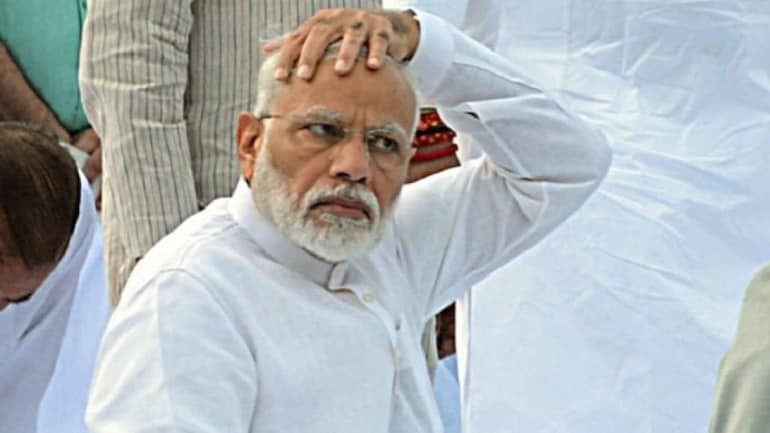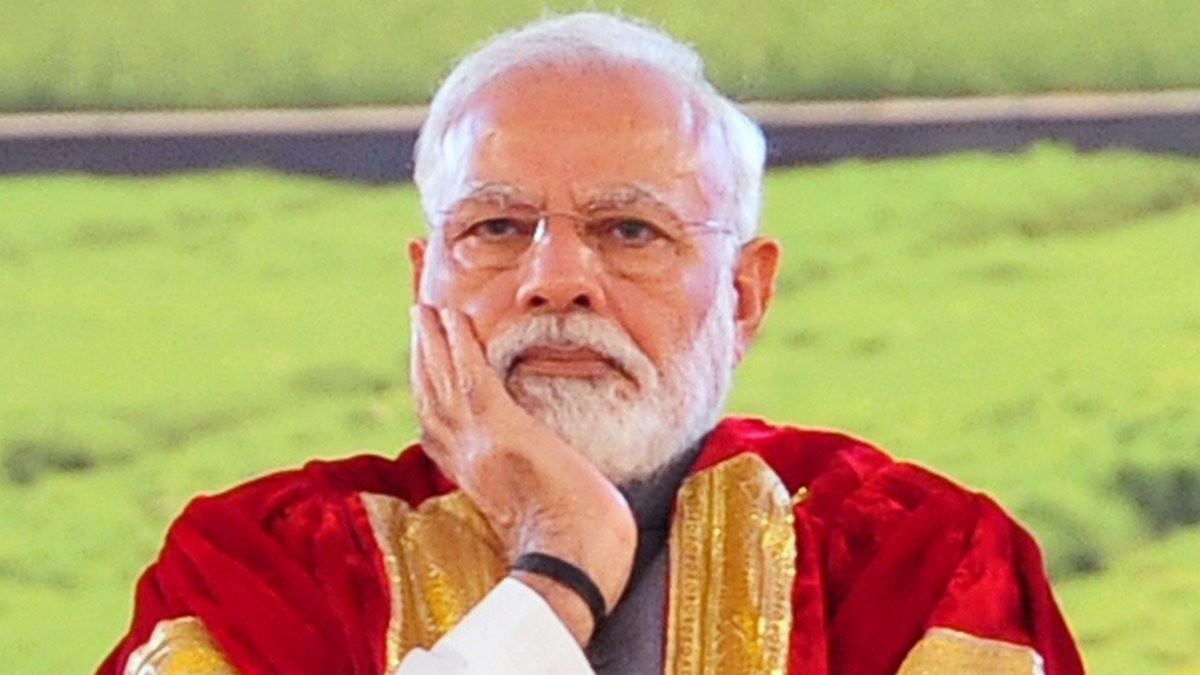“New India” Officially Entered Into Recession with 7.5% shrink in Economy. Congratulations To PM Modi For Working So Hard For 18 Hours To Achieve This Position

The Indian economy has Officially hit a Technical Recession, with the Gross Domestic Product (GDP) contracting to 7.5% in the July – September period.
The economy rebounded from a record slump of 23.9 percent in the previous quarter due to the Coronavirus Pandemic lockdown. The entire government seems confused as to what is happening.

The silver lining is that the economy is doing better than what most analysts had predicted, but the lasting impact on the economy due to the 68- day lockdown is showing its results.
People all over the internet is congratulating our Honorable prime minister Narendra Modi for his continous hard work and efforts for more than 18 hours per day to achieve this success and position. Now the entire cabinet can boast about the success of GST, Demonetization but can not escape from the fact that India has officially and technically entered into the recession which will prove itself worst than 2008 due to the deadly combo offer of Coronavirus and covid19 cases in India.

The Recession is India’s first in at least 24 years (1996). Data released by the National Statistic Office confirms two consecutive quarters of GDP reduction.
The pace of decline narrowed sharply in the quarter ending September because the farm sector held strong while manufacturing slowly picked up and has returned to a positive zone.
However, the same cannot be said for the vital service sector, which continued to fall for the second straight quarter.
Experts said the worst might be over for the economy, even as risks persist and caution about the impact of the new cases of Covid -19 infections.
Although here in lies the division, while some believe the worst to be over for the Indian economy, there are still others who feel the worst may not be over and expect the third-quarter numbers to deteriorate even further.
The logic for the same is the fact that the second quarter may have benefitted from both the pent – up – demand due to the national lockdown and the festive season.
These factors will be non – existential in the third quarter. One also has to keep in mind that the index of eight core sectors industries smarted over a more significant contraction of 2.5 percent in October as compared to 0.8 percent in September.
India’s GDP, which was in a tailspin even before the pandemic erupted, some improvement in the second quarter’s numbers and subsequent numbers could also result from a favorable base effect.
As compared with the rest of the world – India’s GDP growth in the quarter ending June – September is higher than the UK, but it still lags behind most economies.
Another alarm regarding the economy is the reduction in government spending, which has deteriorated compared to the June quarter.
Statistics from the Controller General of Accounts (CGA), which works under the finance ministry, suggest that the central government has been holding back on spending to match even what was committed in the last budget.
According to the RBI, the Indian economy is expected to contract by 9 percent in the current fiscal year.
As mentioned earlier, the worst affected sector is the service sector, which is a crucial contributor to the country’s GDP at more than half of India’s GD.
Construction and Trade, Hotel and Retraunts sector, which together employs almost 20 percent of Indian workforce contracted by 8.6 percent and 15.6 percent respectively. The agricultural sector has been consistent with 3.4 % growth in June and September quarters.
The shortfall is bigger for capital expenditure, which is more critical for long-term growth. The central government has spent only 55.7% and 47.9% of the budgeted revenue and capital expenditure until October this year.
These figures were 59.4% and 59.5%, respectively, in October 2019. The biggest reason for a squeeze in the Centre’s spending could be a revenue shortfall.
Revenue receipts until October 2020 were just 34.2% of the budgetary targets compared to 46.2% for the same period last year.
The case that nominal GDP growth has recovered at a much faster rate than real growth, from a 22.6% contraction in the June quarter to just 4% contraction in the September quarter, may generate some cushion for the revenue situation, as taxes are a fraction of nominal incomes.
Some of the key points to know about the country’s GDP
- The economy is expected to register an overall contraction of 8.7 percent over the full financial year; if these numbers come true, then it would be the worst performance in more than four decades.
- While the government gets its hands together to distribute Covid -19 Vaccine to an estimated 140 crore people, the Agri sector and manufacturing sector’s annual growth raises hopes of early economic recovery.
- The hope in economic recovery is that even though many people have lost their jobs, the majority of the workforce tarries home, and even though the economy was already contracting.
- One of the key positives is that there has been a drop in the total number of coronavirus cases; however, the country still has the highest number of cases next to the US.
- Economic hope is amidst the re-imposition of restrictions in several states. This could slow the pace of recovery for businesses and risk a rise in inflation.
- Under Atmanirbhar Bharat 3.0, Finance Minister Nirmala Sitharaman listed measures worth ₹ 2.65 lakh crore focusing on job creation and sectors such as real estate, bringing the total monetary and fiscal aid in the country’s battle against COVID-19 to ₹ 29.88 lakh crore or 15 percent of its GDP.
- On Thursday, RBI Governor Shaktikanta Das highlighted a stronger-than-expected recovery from the coronavirus-led lockdown, hinting at continued monetary policy aid to revive the economy.
- The RBI has been doing its bit on providing stimulus to the economy, having lowered the key benchmark rates by a total of 115 basis points (1.15 percentage point) so far in this calendar year. The central bank has infused liquidity and transferred crores of rupees in dividends to the government, despite inflation remaining well beyond its comfort level of 2-6 percent.
The hopes for early economic recovery and steps undertaken to keep the businesses open and operational are crucial for India to not slip further in the negative growth trend.
May be very soon almost every youth in this country will have a pakoda shop or will open a tea stall but this is like a dream and mission come true for New India




